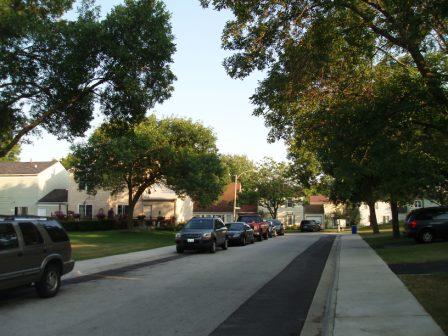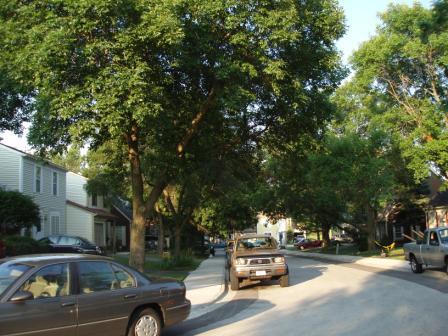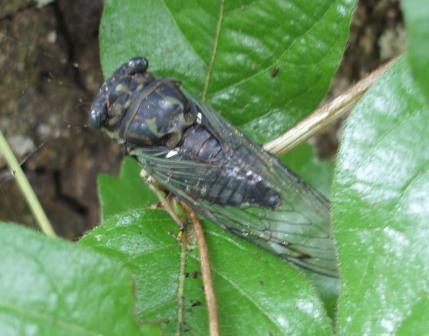April 8, 2020 at 6:29 am (ecology, singing insects)
Tags: Allonemobius fasciatus, Amblycorypha oblongifolia, Carolina grasshopper, Conocephalus brevipennis, Conocephalus saltans, Dissosteira carolina, dusky-faced meadow katydid, global climate change, greater angle-winged katydid, Gryllodes sigillatus, Indiana Dunes National Park, invasive plants, Japanese burrowing cricket, jumping bush cricket, marsh conehead, Microcentrum rhombifolium, Neoconocephalus lyristes, Neoconocephalus palustris, Neocurtilla hexadactyla, Neonemobius palustris, northern mole cricket, oblong-winged katydid, Oecanthus fultoni, Okanagana balli, Okanagana rimosa, Orchelimum campestre, Orchelimum concinnum, Orocharis saltator, prairie cicada, prairie meadow katydid, Pseudopomala brachyptera, Roesel's katydid, Roeseliana roeselii, Say's cicada, short-winged meadow katydid, short-winged toothpick grasshopper, slender conehead, snowy tree cricket, sphagnum ground cricket, stripe-faced meadow katydid, striped ground cricket, tropical house cricket, Velarifictorus micado
by Carl Strang
The previous post illustrated that the Chicago region has been a dynamically changing landscape through the recent millennia, but that now is overshadowed by the alterations our own species has made. Burgeoning human numbers have overwhelmed the planet’s ecosystems, and the native habitats described earlier mostly have been replaced by agriculture and urban growth in the Chicago region. One of the more dramatic changes is the loss of the Kankakee wetland, once described as the Everglades of the North. That vast wetland was drained for agriculture, and only a few pockets of it survive in preserves. Much of the Kankakee River in Indiana is now a straight channel with constructed high levee banks. Other smaller wetlands received similar treatment, with drainage ditches spreading across the agricultural portion of the region. This is not universally devastating to wetland species. Northern mole crickets, for instance, occasionally can be found along drainage ditches.

Drainage ditch, upper reaches of the Kankakee River, St. Joseph County, Indiana. Note farm fields on both sides.
Prairie mostly has been replaced by agricultural fields, and fire suppression has led to its invasion by woody plants. Specialists such as the prairie meadow katydid, prairie cicada and short-winged toothpick grasshopper are hard to find.

Prairie meadow katydid
My singing insects research has required a lot of driving to reach the relatively tiny surviving preserves and parks to which many of the species are now restricted. Much management effort is required in these little islands to maintain their habitats. There are exceptions, of course. Many other species have thrived under our influence. These are mainly weedy ones such as the striped ground cricket, short-winged meadow katydid and Carolina grasshopper, which do well in disturbed habitats, along with woodland edge species such as the greater angle-wing, snowy tree cricket, and jumping bush cricket, which can meet their needs in residential neighborhoods dominated by lawns and scattered trees and shrubs.

Jumping bush cricket
Habitat destruction is not the only human influence. Climate change is the probable cause of northward range expansions by several singing insect species, and it likely will lead to the extinction of the sphagnum ground cricket from the region as the sphagnum bogs dry up. Say’s cicada and some northern grasshoppers already appear to be pushed out.

Sphagnum ground cricket
Climate change isn’t simply a matter of rising temperatures, as the term “global warming” may seem to imply. Global warming is an accurate enough term, as the simplest way to measure climate change is to track the global average temperature. But the point is that our changes to the Earth’s thin skin of atmosphere are increasing its held solar energy. That energy alters patterns of atmospheric flow and the behavior of storms. Droughts, more frequent flood-causing rains, and seasonal increases or decreases in temperature that seem abnormal are examples of results we observe locally. The singing insects are forced to adjust as best they can. Droughts force sphagnum ground crickets into the wettest parts of their bogs. The severe drought of 2012 concentrated wetland meadow katydids and marsh coneheads into the small portions of the Great Marsh in the Indiana Dunes National Park that remained wet. Oblong-winged meadow katydids may be pre-adapted to such year-to-year variability. Blatchley (1920) observed that their eggs, laid in moist soil, can take 2-3 years to hatch. In my travels through the region I failed to hear a single individual in the years 2010 and 2019, but in other years they have been abundant and widespread. Some of the cicadas and other species may have similar flexibilities.

Oblong-winged katydid
People also have introduced plant species from other parts of the world which, released from the consumers and competitors which hold them in check in their native lands, have become invasive plants here. Their unfair competitive advantage has led to their displacing the region’s native vegetation in an increasing number of places. This is most evident in our wetlands. Wetland meadow katydids and other singing insects are limited to places where native wetland grasses have not been supplanted by reed canary grass, common reed, purple loosestrife, and hybrid cattails. These invasive plants are proving difficult to control, and the outlook is not good for species such as the dusky-faced meadow katydid and marsh conehead. To my knowledge the once relatively widespread stripe-faced meadow katydid now is confined to a single site, and the slender conehead, never known from many locations, apparently is gone from the region.

Stripe-faced meadow katydid
Introductions have not been limited to plants. Several species of singing insects also have been imported. Roesel’s katydid is the most common of these in our region. A European predaceous katydid, Roesel’s was introduced to the Montreal, Quebec, area several decades ago and expanded from there. They occur in open habitats with tall herbaceous vegetation throughout the Chicago region. Japanese burrowing crickets are thought to have arrived at the port of Mobile and spread out from there. They are abundant as far north as Indianapolis, and common in Rensselaer in the southern part of our region. With scattered new appearances each year occurring as far north as DuPage County in Illinois, so far, I expect them to become widespread and abundant here. The tropical house cricket represents the possibility of other, short-term introductions that are unlikely to persist in our climate.

Roesel’s katydid
2 Comments
October 29, 2013 at 6:15 am (ecology, singing insects)
Tags: Agrilus planipennis, Allonemobius fasciatus, block count, Carolina ground cricket, emerald ash borer, Eunemobius carolinus, Fraxinus pennsylvanica, greater angle-winged katydid, green ash, Microcentrum rhombifolium, striped ground cricket
by Carl Strang
The developers who built my subdivision, in their wisdom, decided to plant mostly green ashes along the streets. That brilliance has been answered in the form of an insect, the emerald ash borer. This little invasive ash-killer has done a number on my neighborhood. A series of before-and-after shots follows, going around the block route I follow when I do my standard survey of singing insects in the warm months.

Looking north along my street in 2009.

The same block now.

Turning west in 2009.

Same view, 2013.

The next block, looking south in 2009.

And now.

The final leg, facing east in 2009.

Hard to believe it’s the same block today, but it is.
Most of the tree loss happened over a brief period of time, the second half of summer last year. Ever the opportunist, I made predictions about the response of the three singing insect species common enough for statistical comparisons between this year and last. Greater angle-wings are tree-dwelling katydids, and so I expected their counts to drop. Carolina ground crickets mainly live beneath foundation shrub plantings, so I expected no significant change. Finally, striped ground crickets prefer sun-lit lawns to shade, so I expected their numbers to increase. I was correct on two of the three predictions.
The Carolina ground cricket median count in 2013 was 7, not significantly different from 2012’s median of 5 (Mann-Whitney U-test of the ranks of all the counts led to a z statistic of 2.05, p>0.01). The median count of striped ground crickets in 2013 was 20, that in 2012 was 11. The comparison of ranks produced a statistically significant z value of 3.89 (p<0.01). I was somewhat surprised at the lack of a demonstrable difference for greater angle-wings (z = 1.00, p>0.01). The 2013 median count was 3, less than the 2012 median of 5, but the difference was not as large as one might expect. There were enough surviving trees of other species to sustain a population of the katydids, and also the removal of the nearer trees made more distant angle-wings more audible.
Leave a Comment
December 10, 2012 at 7:03 am (plant-eating insects, singing insects)
Tags: Allard's ground cricket, Allonemobius allardi, Allonemobius fasciatus, Carolina ground cricket, Chortophaga viridifasciata, common true katydid, dog day cicada, Eunemobius carolinus, first song date, gladiator meadow katydid, greater angle-winged katydid, greenstriped grasshopper, insect phenology, last song date, Linne's cicada, Melanoplus femurrubrum, Metrioptera roeselii, Microcentrum rhombifolium, Oecanthus fultoni, Orchelimum gladiator, Pterophylla camellifolia, red-legged grasshopper, Roesel's katydid, scissor-grinder cicada, snowy tree cricket, striped ground cricket, Tibicen canicularis, Tibicen linnei, Tibicen pruinosa
by Carl Strang
I now have 7 years’ data in which I have noted the first and last dates on which I heard each singing insect species. This year was characterized by a mild winter followed by a warm spring and then a summer of drought. The mild winter and spring apparently were responsible for this year’s early phenology. First song dates were the earliest I have recorded in DuPage County for 17 of the 21 species for which I have 7 years of records. The chi-squared value of 77.33 (with an expected value of 3 species per cell for each rank of earliest to latest) is, of course, statistically significant.

The greater angle-wing started earlier and finished earlier this year than in any of the previous 6 years.
As for last song dates, singing insects generally finished early this year. Of the 20 species for which I have 7 years’ data, 15 had their earliest or second-earliest ending dates, and the chi-squared value was a statistically significant 22.68. This was not a particularly cold or dry late summer and autumn, so the implication is that singing insects have a fixed rate of attrition or duration of song season, so that an early start results in an early finish. The 12 species for which I have the best, most reliable records do have differences in observed song season lengths (ranges for the 7 years, and ranked lowest to highest: 18-42 days for Roesel’s katydid, 16-52 days for gladiator meadow katydid, 52-96 days for the greater angle-wing, 58-96 days for snowy tree cricket, 67-91 days for the scissor-grinder cicada, 64-94 days for the greenstriped grasshopper, 62-109 days for Linne’s cicada, 72-105 days for the dog day cicada, 81-107 days for the common true katydid, 107-139 days for Allard’s ground cricket, 111-141 days for striped ground cricket, and 113-143 days for Carolina ground cricket).
The number of clear, cold nights seemed high enough in November that they might partly explain the early conclusion of common ground cricket songs this year, especially given the recent study by MacMillan et al. (2012) indicating that there is a metabolic cost to recovering from cold-temperature paralysis. However, I found no significant relationship between last song dates and the number of November days with low temperatures below 33F over 2006-2012 for any of the three species (Spearman’s r values 0.51 for Allard’s ground cricket, -0.39 for striped ground cricket, and 0.33 for Carolina ground cricket). It is interesting, though, that I have seen a few red-legged grasshoppers active a couple weeks after the last ground cricket.

An early December red-legged grasshopper
This bigger insect may have larger fat reserves to draw upon and so extend its season.
Leave a Comment
September 27, 2012 at 6:12 am (methods, singing insects)
Tags: Allard's ground cricket, Allonemobius allardi, Allonemobius fasciatus, Anaxipha exigua, black-legged meadow katydid, broad-winged tree cricket, Carolina ground cricket, Chortophaga viridifasciata, common true katydid, dog day cicada, Eunemobius carolinus, fall field cricket, gladiator meadow katydid, greater angle-winged katydid, greenstriped grasshopper, Gryllus pennsylvanicus, Gryllus veletis, Linne's cicada, lyric cicada, Metrioptera roeselii, Microcentrum rhombifolium, narrow-winged tree cricket, Neoconocephalus ensiger, Neoconocephalus retusus, Neoxabea bipunctata, northern dusk-singing cicada, Oecanthus fultoni, Oecanthus latipennis, Oecanthus niveus, Orchelimum gladiator, Orchelimum nigripes, Pterophylla camellifolia, Roesel's katydid, round-tipped conehead, Say's trig, scissor-grinder cicada, singing insect monitoring, snowy tree cricket, spring field cricket, striped ground cricket, swamp cicada, sword-bearing conehead, Tibicen auletes, Tibicen canicularis, Tibicen linnei, Tibicen lyricen, Tibicen pruinosa, Tibicen tibicen, two-spotted tree cricket
by Carl Strang
One of the obstacles to a singing insect monitoring program is the large number of various songs that need to be learned for identification. This is not really much different from learning bird songs for breeding bird monitoring, however (except that the total number of species is smaller here). Instead of being daunted by the entire process, it is possible to take the learning process in stages, beginning with the songs that are common and easy to recognize, the ones you have been hearing all along but simply didn’t have the species labels. Here is a list of a dozen suggested species to start with in the first stage: spring field cricket/fall field cricket (their songs are identical), Allard’s and striped ground crickets, snowy tree cricket, common true katydid, black-legged meadow katydid, greater angle-wing, round-tipped conehead, dog day cicada, scissor-grinder cicada, and Linne’s cicada (for more information on these species, try the tags at the head of this post).

Snowy tree cricket, one of the species on the starter list
This list and those that will follow are for northeastern Illinois and northwestern Indiana. There would be substitutions in other parts of the country (I encourage readers elsewhere to make comments here with their own suggestions). Go to reference recordings of these species’ songs, either on-line at the Singing Insects of North America website or through the CD that accompanies the Songs of Insects book. It is not too late this year to hear many of the species on this list on the warmer days, though some are finished or nearly so.
My recommended species list to focus on in the second stage of learning consists of 8 species and groups of species: greenstriped grasshopper, gladiator meadow katydid, Roesel’s katydid ( three species that sing relatively early in the season), and then later, Carolina ground cricket, Say’s trig, sword-bearing conehead, two-spotted/narrow-winged tree crickets (no need to worry yet about separating the two), and the meadow tree cricket group (3-4 species whose songs are essentially identical to the ear and will remain so).

Roesel’s katydid is a species from the second-stage list.
This list of common species either will take you to additional, though still readily available, habitats, or else require a little more of a practiced ear (which practice you got with the first species group). In particular, seek out and spend some time getting familiar with the songs of the Carolina ground cricket and Say’s trig. They need a little more effort to recognize in the field, but once you have them, they will be touchstones for many other species (much as robin songs are for learning bird vocalizations). If you are starting now, you might push the Carolina ground cricket to the first list, as it is one of the few species singing on the cooler days and evenings.
Once you have mastered the second list of species, you are ready for the more subtle distinctions needed to distinguish the songs in the third species list. This includes separating out the song of Linne’s cicada from similar songs by the lyric cicada, and in some areas, swamp and/or northern dusk-singing cicada.

Linne’s cicada
Also, by this point you are ready to distinguish the two-spotted tree cricket song from that of the narrow-winged tree cricket. Also, the broad-winged tree cricket should stand out now from other long-trilling species. In addition, you no doubt have noticed and begun to puzzle out other species that are more idiosyncratic in their distribution or smaller in numbers that you have encountered in your favorite places.
And that brings you to the fourth stage, learning the songs of whatever remaining species may live in the area you wish to monitor. For this you will need a regional guide. In the Chicago region, you can meet this need with the guide I am developing. It is available for free as a .pdf e-mail attachment. Simply request it at my work e-mail address: cstrang@dupageforest.com
As you are learning and listening, pay attention to which songs you can hear clearly, and at what distances, and which are marginal. This will inform the limitations you will need to address or acknowledge in your monitoring.
1 Comment
August 24, 2012 at 5:49 am (singing insects)
Tags: fork-tailed bush katydid, greater angle-winged katydid, Indiana Dunes State Park, Microcentrum rhombifolium, Scudderia furcata
by Carl Strang
A final gift at Indiana Dunes State Park was of fork-tailed bush katydids singing near the nature center after dark, in the absence of greater angle-wings. Reference recordings of the two species’ songs sound very similar, the single brief buzz of the fork-tailed resembling the alternate song of the greater angle-wing (the latter species also produces an unmistakable ticking sound). Greater angle-wings are very common in northeast Illinois woodlands and residential neighborhoods, but fork-taileds are less so, leaving me wondering if I might confuse them in my surveys. A fork-tailed at the State Park resolved this dilemma.

He was singing in a small tree, just a few feet above the ground.
The fork-tailed’s song is not nearly as loud as the greater angle-wing’s (it is a noticeably smaller insect with narrower, more open wings). The greater angle-wing’s brief song also has a sharp, harshly rasping quality in contrast to the lisping nature of the fork-tailed’s song. Finally, greater angle-wings usually sing from high up in trees. The three fork-taileds I heard at Indiana Dunes all were within 8 feet of the ground. While phonetic renderings can be useful in some cases, I think they can only confuse in this instance: the same or similar syllables (tzip, thisp, etc.) could be used to describe either insect’s song.

Greater angle-wing
Reference recordings commonly are made of captive insects held indoors, with the microphone very close to the singing subject. This makes for a clear, isolated recording, but can produce misleading impressions, as the present case illustrates.
Leave a Comment
August 9, 2011 at 5:52 am (singing insects)
Tags: Allard's ground cricket, Allonemobius allardi, Anaxipha exigua, black-legged meadow katydid, Carolina ground cricket, common true katydid, confused ground cricket, Eunemobius carolinus, Eunemobius confusus, fall field cricket, greater angle-winged katydid, Gryllus pennsylvanicus, Microcentrum rhombifolium, Neoxabea bipunctata, Oecanthus fultoni, Orchelimum nigripes, Pterophylla camellifolia, Say's trig, snowy tree cricket, two-spotted tree cricket
by Carl Strang
By this point in the season we are hearing nearly all the common singing insects in northeast Illinois. First song dates on the whole have been in line with those of recent years, but a few have been relatively late and one was comparatively early.

Snowy tree cricket
My own first observations of singing males typical of residential neighborhoods have included Carolina ground cricket (19 July), common true katydid (also 19 July, a relatively early start for that species), Allard’s ground cricket (22 July), snowy tree cricket (29 July), fall field cricket (30 July, a relatively late start but I had been out of town for a week), two-spotted tree cricket (31 July), Say’s trig (31 July), and greater angle-winged katydid (4 August).

Greater angle-winged katydid
I didn’t get into forests at night until the Roger Raccoon Club campout, so my first date of August 3 for oblong-winged and rattler round-winged katydids has limited meaning. Another forest species that may have started up before my first observation of August 2 was the confused ground cricket.

Black-legged meadow katydid
Our most common large meadow katydid, the black-legged, started up around August 2, a relatively late start for this wetland-edge insect.
Leave a Comment
December 17, 2010 at 7:00 am (methods, singing insects)
Tags: Allonemobius fasciatus, block count, Carolina ground cricket, Eunemobius carolinus, greater angle-winged katydid, greater anglewing, Microcentrum rhombifolium, striped ground cricket
by Carl Strang
One easy data set to collect in my singing insects study is simply to walk around my neighborhood block (usually when going to my mailbox) and count the insects I hear. For this year I have comparisons between years, a comparison to my new count at my parents’ home in Culver, Indiana, and a consideration of species counts with respect to the time of sunset. Today I’ll focus on this year’s results in my neighborhood.

This photo of my yard is not representative of the neighborhood, in that most of my neighbors are lawn lovers who have very limited shrub and herbaceous plantings.
The overall count in my Warrenville, Illinois, block was 15 species in 2010 (for the complete list go here). No new species were added. Again in 2010 the only species abundant enough for comparisons between years were striped and Carolina ground crickets, and greater anglewing katydids.

Striped ground crickets are named for stripes on the top of the head.
Though striped ground crickets occur in prairies, they really hit their stride in mowed lawns. Not only are they the most abundant singing insect in my neighborhood, their numbers have been very consistent over the years with median counts of 13, 12, 12 and 14.5 in the respective years of 2007 to 2010. None of these differences are statistically significant.

The ticking song of the greater anglewing is a distinctive summer evening sound wherever this katydid occurs.
Carolina ground crickets, which hang out in denser plantings, and tree-dwelling greater anglewings likewise showed no changes between 2009 and 2010 (this year’s median counts 4 and 1, respectively).
1 Comment
August 27, 2010 at 7:36 am (singing insects)
Tags: fork-tailed bush katydid, greater angle-winged katydid, greater anglewing, Microcentrum rhombifolium, Scudderia furcata
by Carl Strang
In a recent post I featured fork-tailed bush katydids.

I mentioned that the notes of their song are very similar to those of a secondary song produced by the greater angle-winged katydid.

Greater angle-wings are common in woods and neighborhoods across the eastern and southwestern U.S. Their typical, very distinctive song is a series of rapid, regular ticks, perhaps 4-8/second and lasting a few seconds. Sometimes, though, they produce loud, single “zik” calls that are very similar to those of the fork-tailed. I mentioned that in the New York Cricket Crawl the instructions say that the greater angle-wing produces this note no more than once every minute, while the fork-tailed emits it several times per minute. I was not comfortable with this distinction, and in fact it is contradicted by another reference, Elliott and Hershberger’s Songs of Insects. They say that this note can be produced every few seconds by either species, but in the fork-tailed it is limited to series of 1 to 3 at a time.
Over the past few nights I have heard a pattern produced by three different greater angle-wings in two widely separated locations that better fits the Elliott-Hershberger description. The pattern consisted of the loud raspy notes at 2-3-second intervals over a period of 30 seconds to 2 minutes, a brief pause, the ticking sequence, pause, and then a resumption of the loud raspy notes. In each case the sounds all were coming from the same point high in a tree.
I can no longer go with the Cricket Crawl description, which may in fact be valid for that local area. For now I will stick with the Elliott-Hershberger suggestion, and hope that at some point I can learn to distinguish the sound quality of the notes produced by these two species.
1 Comment





























